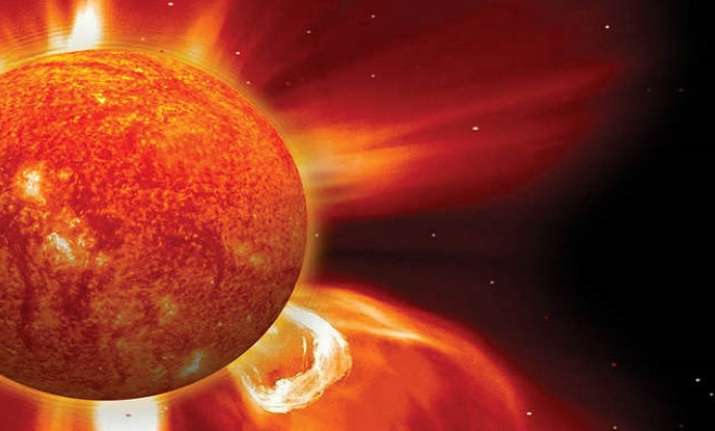Massive solar storm expected to hit earth today, tech blackout possible: All you need to know
The National Oceanic and Atmospheric Administration (NOAA) said that the storm could cause an aurora or polar lights when it arrives. NOAA has classified the storm as G-1 or 'minor'
A massive solar storm or geomagnetic storm is expected to hit the Earth today as a coronal hole has opened up in the Sun, resulting in the release of a huge swarm of cosmic particles. The National Oceanic and Atmospheric Administration (NOAA) said that the storm could cause an aurora or polar lights when it arrives. NOAA has classified the storm as G-1 or 'minor'.
Here are things you need to know about the solar storm:
1. Experts believe that the consequences of the storm could be far more serious than the appearance of the polar lights.
2. The scientists have warned that the solar storm could affect satellite-based technology of the earth. In layman's terms, the planet might witness a partial tech blackout.
3. Solar winds, which are a stream of particles from the sun can heat the Earth's outer atmosphere causing it to expand. This can affect satellites in orbit, leading to a lack of GPS navigation and mobile phone signal.
4. The surge of particles can also lead to high currents in the magnetosphere, which can lead to higher than normal electricity in power lines, resulting in power failures.
5. The higher amounts of radiation also leave people vulnerable to cancer.
6. For the most part, the Earth’s magnetic field protects humans from the barrage of radiation, but solar storms can affect satellite-based technology.
7. Additionally, a surge of particles can lead to high currents in the magnetosphere, which can lead to higher than normal electricity in power lines, resulting in electrical transformers and power stations blow outs and a loss of power.
What is a Geomagnetic Storm?
1. A geomagnetic storm is a major disturbance of Earth's magnetosphere that occurs when there is a very efficient exchange of energy from the solar wind into the space environment surrounding Earth.
2. These storms result from variations in the solar wind that produces major changes in the currents, plasmas, and fields in Earth’s magnetosphere.
3. The solar wind conditions that are effective for creating geomagnetic storms are sustained (for several to many hours) periods of high-speed solar wind, and most importantly, a southward directed solar wind magnetic field (opposite the direction of Earth’s field) at the dayside of the magnetosphere. This condition is effective for transferring energy from the solar wind into Earth’s magnetosphere.
4. The largest storms that result from these conditions are associated with solar coronal mass ejections (CMEs) where a billion tons or so of plasma from the sun, with its embedded magnetic field, arrives at Earth.
5. CMEs typically take several days to arrive at Earth, but have been observed, for some of the most intense storms, to arrive in as short as 18 hours.



No comments:
Post a Comment